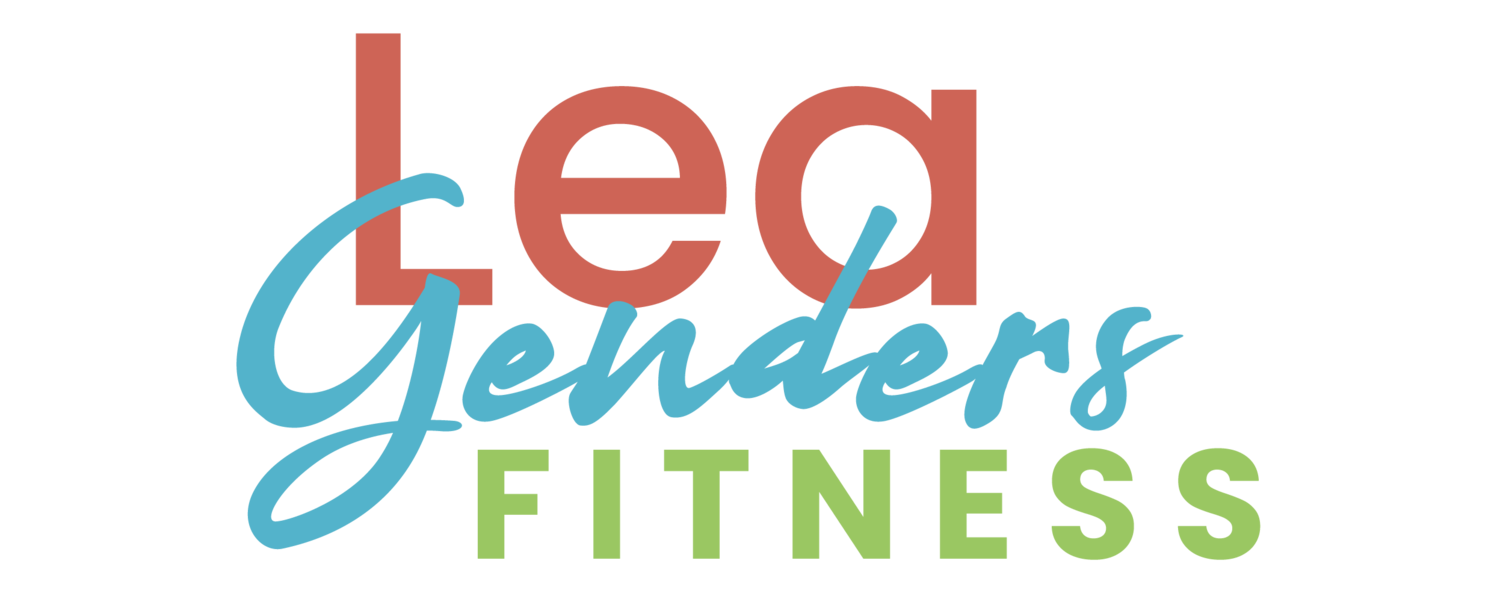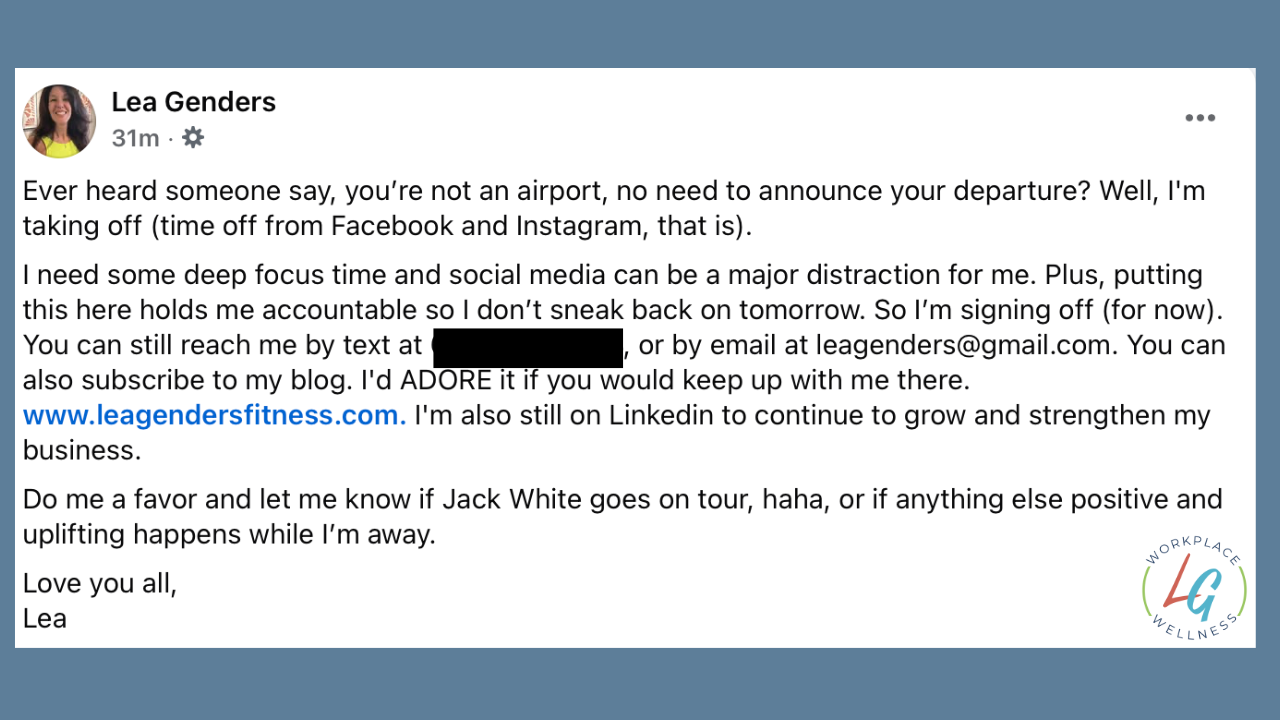It's October already, and I can hardly believe how quickly the year is moving. The changing season always feels like a natural checkpoint, a chance to pause and look at my habits with fresh eyes. While most people are gearing up for the fall holidays (even if it still feels like summer here in Texas), I like to use this time to reassess what's working and where I can improve.
One area where I consistently struggle is with social media use. It's easy to call scrolling "downtime" or "relaxing," but it doesn't give the brain real recovery. On top of the endless content; it's also the negativity, the political divides, and the arguments that seem to appear in every feed. None of it leaves me feeling better. As I've been reflecting on how I can improve in the final quarter of the year, I've realized this is the season I want to refocus on habits that help me finish strong, and digital wellness is at the top of the list.
I'll be honest: my average daily screen time recently was so high I'm embarrassed to share it. Having a mini computer in our pockets is convenient, but it pulls our attention in ways we never intended. If you've ever picked up your phone without a clear reason, you know the feeling. That's why I've been experimenting with new ways to take back control, so I can focus my energy on the things that matter most: my family, friends, my business, coaching, training, writing, learning, and reading.
Why Digital Wellness Matters
Digital wellness means creating healthy boundaries with technology. Without some structure, phones become a constant pull on attention. At work, that pull shows up as stress and scattered focus. At home, it interrupts meals, conversations, and sleep. We often reach for screens hoping to relax, yet endless scrolling rarely leaves us feeling refreshed.
As I look at the fourth quarter, I've realized that protecting my attention is just as important as protecting my health. Setting digital boundaries gives both space and energy back.
The Negative Effects of Social Media
The constant exposure to negativity, divisive arguments, and comparison culture doesn’t add value to daily life. Even when I log on with the intention of connecting, I often find myself drawn into noise that does the opposite. This became abundantly clear recently when I caught myself following a political argument between two high school classmates I haven’t spoken to in person in 35 years. It struck me how much of my attention was being pulled into a conflict that had nothing to do with my real life or my real connections. Recognizing that pattern has been an important step in making different choices.
Practical Strategies for Digital Wellness
If you're ready for a reset, try one or two of these ideas and build from there.
Keep Your Phone Away From Meals
Food is both fuel and connection. Place your phone out of reach while you eat and notice how much more present you feel. Mindful eating can change the way you experience food. When you slow down and notice, you often enjoy your meals more, naturally stop when you’re full, and put an end to mindless eating.
What surprised me most was how challenging it felt at first to simply leave my phone off the table. It made me realize how we silently build habits that seem harmless, but slowly chip away at our experience and attention.
Don't Sleep With Your Phone in the Room
If you need an alarm clock, get one like you had in the 90s (ha). Or put your phone in another room with the volume up so you have to get out of bed to turn it off. I can tell you from experience, I definitely jump out of bed faster when my phone is blaring from the next room.
Take Intentional Breaks
Choose a weekend, a week, or even a single day where you step away from screens. Use that time to rest your mind and body.
Turn Off Notifications
Every ping is a request for your time. The majority are just distractions. Decide which ones matter and silence the rest. I’ve found that by setting aside a single time to deal with notifications, I avoid the constant pull to check my phone all day long.
Delete Apps You Don't Use
Think of it as spring cleaning for your phone. Remove clutter that takes up space and attention. And let’s be honest, the extra room is better spent on more photos of the dog sleeping.
Try a Digital Cleanse
Commit to certain hours of the day without screens. Fill that time with reading, walking, or conversation.
Pair Phone Use With Mindful Breathing
Each time you pick up your phone, pause for three breaths before opening it. A small ritual like this can add calm to your day and turn countless check-ins into moments of mindfulness.
Set Limits on Usage
Most phones have tools to track and cap screen time. Use them to create gentle reminders.
Put Your Phone Away When With Others
Give people your full attention. Connection feels richer without a phone on the table.
Only Use Your Phone While Standing
This quirky rule makes scrolling less comfortable, which means you'll do it less often.
The Benefits of a Digital Detox
Even short breaks from screens can feel surprisingly restorative. A weekend without checking social feeds, or a few hours each evening when the phone stays in another room, creates space for deeper rest. Many people notice clearer thinking, more patience, and a stronger sense of presence after even a small reset. Less time online opens up more quality time offline.
My Own Break From Social Media
I’m committing to step back from social media because I want to experience life with fewer digital demands and more focus on what matters. The space I create will give me more time for reading, writing, and in-person connection. Whenever I catch myself saying I don’t have time for the things that are important, my average screen time tells a different story. What I hope to gain is a sense of calm that comes from not checking a feed every spare moment. That pause is a reminder that boundaries open up room for what really matters.
Somewhat ironically, I posted about this on Facebook for accountability, and then immediately felt the pull to watch for likes and comments. My FOMO (fear of missing out) is strong. What will I miss? What if Jack White goes on tour and I miss the announcement? haha. It will take more intention to reach out to friends and connections directly, rather than relying on social updates. But I also know that scrolling a feed is not the same as a meaningful connection. A like isn't a conversation. In the long run, this shift will strengthen my relationships rather than weaken them.
I'll still be on Strava for fitness because seeing your fitness activities motives me, and LinkedIn to grow and strengthen my business connections, so I'd love it if you'd follow me over there.
I recently shared a special offer on LinkedIn for a wellness program designed for small teams. If you’d like to take a look, you can check it out here. And if you know someone who might be a good fit, I’d be grateful if you passed it along.
Ending the Year with Presence
As we close out the year, digital wellness can be the quiet practice that supports larger goals. By setting limits and practicing presence, we reclaim clarity and energy that scrolling will never provide.
If you've been meaning to reset, consider this your invitation. Start with one small step this week and see how it feels. Sometimes the biggest difference comes from the smallest changes. We can do this together!
Questions? I’d love to help.
Lea
Lea Genders is a board-certified health coach, personal trainer, and workplace wellness consultant based in Fort Worth, TX. She offers corporate wellness programs for employee health and productivity, as well as in-person and virtual training / coaching for individuals worldwide. Her blog shares expert guidance on strength training, running, and sustainable nutrition @fortworth_trainer













Forget the pressure to "end the year strong." This December, I am exploring a different approach: ending the year soft. Learn how compassion, rest, and grace can set you up for a healthier New Year than pushing ever could.